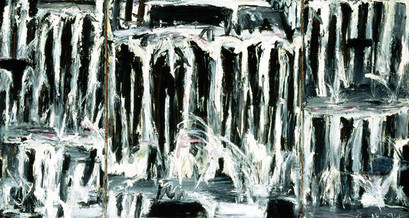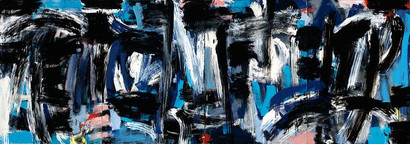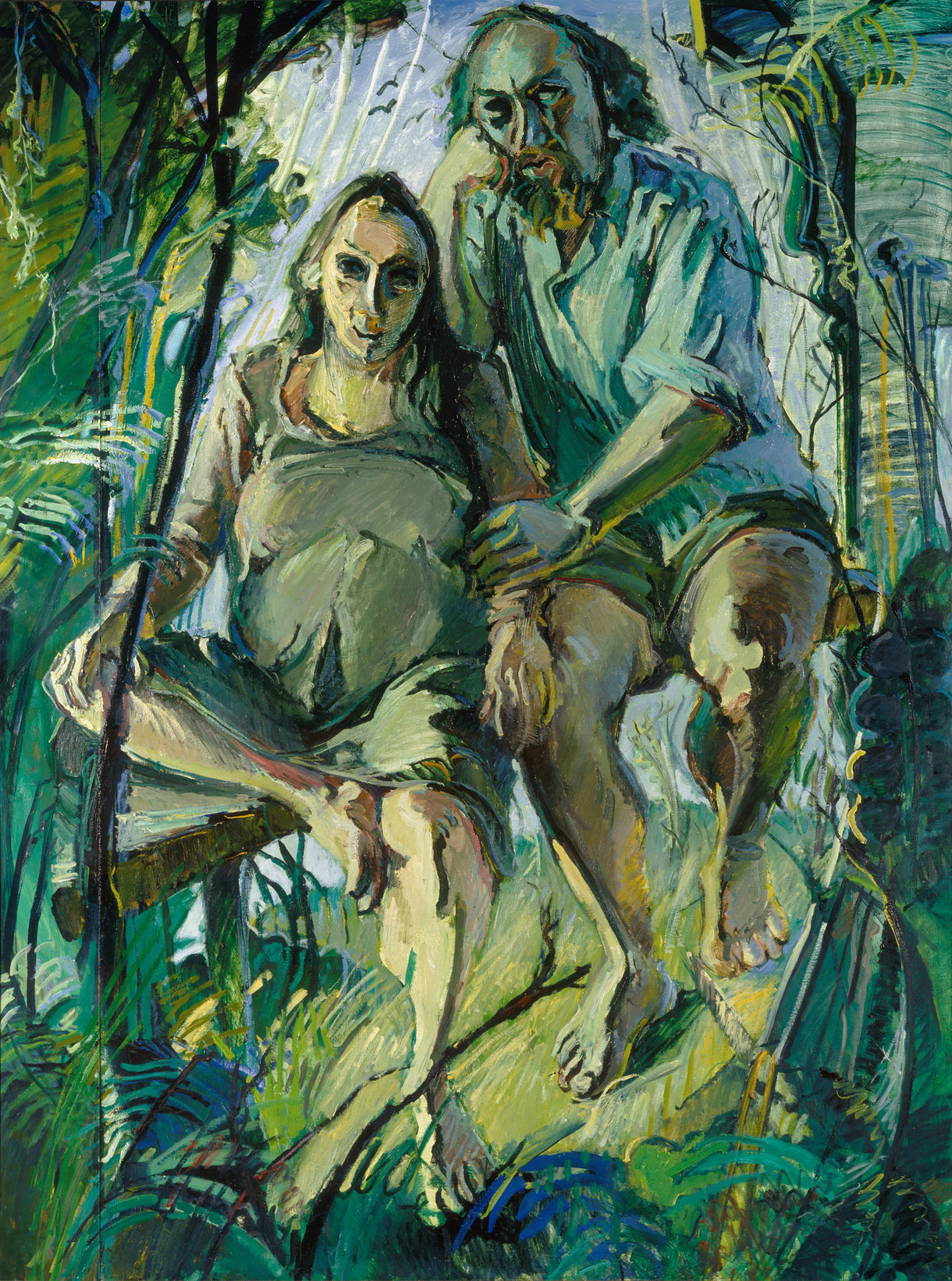This exhibition is now closed
Alan Pearson is an artist who is much admired and represented in a number of New Zealand public collections and many private collections both in this country and overseas. This retrospective exhibition spans four decades and incorporates both painting and drawing. The title of the exhibition Heaven and Blood is taken from a 1988 painting by Pearson and reflects the dichotomy of his life as an artist in New Zealand over nearly half a century, and has been mirrored in his paintings.
Alan Pearson has been labelled an 'Expressionist' but he is also an artist who not only externalises his reaction to the real world, but reaches out to other planes of reality and senses. His imagery touches the spirituality of being.
Often Pearson's paintings appear to be an abstract, gestural imbroglio of colour and movement, but always there is an essential subject identity made up of evolving figurative elements.
Portraiture stands as an important part of his oeuvre. In portraiture, through the recognition and representation of the individual human psyche, he has a more direct vehicle for making connections with other planes of human existence. This is, however, always very much a symbol within the scope of the figuration and one that Pearson has developed further than any other New Zealand artist in recent times.
In fact, within the realm of figurative expressionism, Pearson has explored totally new territory. His career as an artist began in 1956 at the Wellington Technical College where he was tutored by Frederick Ellis. The next year he commenced studies for a diploma in Fine Arts at the University of Canterbury.
Pearson's ability at art school was quickly recognised and he took prizes and scholarships with ease. Following his graduation in 1959 he attended Auckland Teacher's College before returning to Christchurch to do an honours year at the University of Canterbury School of Fine Arts
In 1962 he was appointed art master at Cashmere High School, a position he held until 1964. With a Queen Elizabeth II Arts Council Grant he travelled to London where he studied at the Royal Academy School during 1965–6.
He returned to New Zealand in 1967 taking up a position as a designer with Auckland Television and painted part-time. In October of that year he held his first one-man exhibition at the Vulcan Lane Gallery which he ran, for a short time, with his first wife Coral. After three years in television he decided to leave Auckland and return to Christchurch where in 1970 he began spending more time painting and also taught part-time at Kingsley Girls' School.
In 1976, with assistance from a Queen Elizabeth II travel grant, he was able to spend four months on a study tour in Europe and Britain. Upon his return he settled back in Auckland and it was there, in the late 1970s, that he made some of his most significant works of that decade, including the Huia series and Portrait of Mrs Oliver a work that was awarded the National Bank Portrait Prize in 1979. Pearson had taken the same prize the previous year.
As a recipient of a Queen Elizabeth II assistance grant in 1980, Pearson travelled to Italy where he lived for 18 months before moving to Middlesbrough in England for a time.
Pearson then moved to London where he lived and painted over the following four years. During that time he also made painting trips to Italy, France and Germany. In June 1985 he returned to Christchurch. The following year he took up the position of Artist in Residence at Dunedin Public Art Gallery and Otago Polytechnic. On his return to Christchurch in 1987 he moved into a studio in the Christchurch Arts Centre.
In 1988 Pearson made a painting trip to Italy and the following year to Australia, the products of which he exhibited in Auckland, Wellington, Dunedin and Christchurch. During the past decade Pearson has continued to be involved not only with his own work but with the art community.
His travels have continued. In April 1992 he again made a working visit to Australia and in June and July to France, Italy and Germany. From May–July 1993 Pearson was the artist in Residence at Tai Poutini Polytechnic in Greymouth. A working visit to Australia in 1995 also resulted in his first solo exhibition in that country.
In 1995 Pearson changed his medium and his studio location to Lyttelton, where he began to develop a new direction in his work. However, whilst the enamel medium was effective, its solvent fumes were not good for his health and in 1997 he returned to oil paint. Early in 1998 Pearson became aware that he had developed a heart condition. The surgery that followed was successful, but for a time he was left uncertain of the future.
A return to health this year has resulted in renewed energy and he will hold his second solo exhibition in Australia in July. During the past 40 or so years, Pearson seems to have been peripatetic and has been criticised for the changes in location of his residence but this has been essential as changing experience is important to the renewal and revitalisation of his imagery. Like any expressionist artist Pearson's life and art are closely intertwined and he remains today a very real force in contemporary New Zealand painting.
I have curated this exhibition in collaboration with Alan. It will only be seen in Christchurch and will be supported by an illustrated catalogue that will include an interview with the artist and essays by Tim Garrity, Cassandra Fusco, Alison Pearson and myself.
Neil Roberts
This exhibition was held at the Robert McDougall Art Gallery in the Botanic Gardens.
-
Date:
24 August – 31 October 1999 -
Location:
Robert McDougall Art Gallery - main gallery -
Exhibition number:
663







